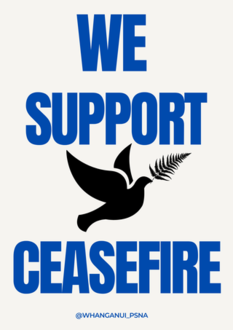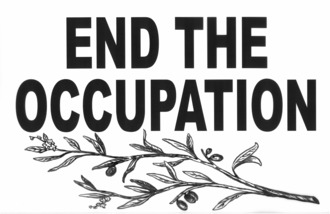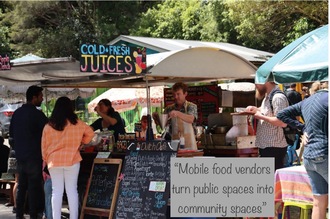-
Invercargill City Council: call for an Immediate and Permanent Ceasefire in GazaOn January 26th, the International Court of Justice determined that the Israel-Gaza conflict plausibly amounts to genocide. As of July 12th, 38,000 Palestinians have been killed, over 90,000 injured, and 90% of the population displaced—roughly half under the age of 18. Despite the seriousness of the situation, and calls for a ceasefire from regional bodies such as the Whanganui and Far North District Councils, there has been no response from our local representatives. Remaining silent on violence and terror against civilians is not a neutral stance, we have a duty to the Palestinian families within our communities who are affected by these events. Denouncing atrocities and calling for action holds significant political weight and influences our collective well-being. A community committed to upholding human rights ensures safety for everyone. As a member state of the United Nations, New Zealand is bound to proactively support its resolutions. Numerous resolutions, including the recent UN Security Council Resolution 2728 adopted on March 25, 2024, call for a ceasefire and this call has been supported by many local and international bodies. In March 2022, Parliament unanimously voted to condemn the Russian government's invasion of Ukraine, reflecting our country’s strong tradition of upholding international human rights. In line with this, we urge the Invercargill City Council and Southland Regional Council to honour international law and join the Whanganui and Far North Councils in calling for a ceasefire.79 of 100 SignaturesCreated by Seren Palliser-O'Donohoe
-
Establish a dedicated trafficking and exploitation helplinehttps://www.youtube.com/watch?v=6x-haSgcj-Q There are currently an overwhelming number of helplines for migrant exploitation, labour exploitation, sexual violence and child abuse, which are operated by both government and non-government organisations. With so many options, exploitation victim-survivors often feel confused about where to get the best information on their situation, before even considering formal reporting through the police or other agencies. Exploitation is a unique form of abuse as it involves some form of commodification of people (including online or through technology-assisted methods), and requires a specialised emergency response and approach to victim-survivor recovery initiatives. The Slave Check Foundation's research [1], involving 12 adult survivors from New Zealand and Australia, revealed alarming gaps in recognition and response when victims sought help. The overwhelming response from all the survivors who took part in the research was that they wanted a helpline and that the existing helplines are confusing for them. A staggering 60 percent of surveyed survivors reported that initial attempts to seek assistance from organisations such as the police, medical agencies, or helplines did not result in recognition of their situation being exploitative. As stated in the 2022 Trafficking in Persons report produced by the US State Department, "the Government of New Zealand does not fully meet the minimum standards for the elimination of trafficking" and does not yet have a national referral mechanism in place which includes a dedicated helpline [2]. Overall, victims of exploitation and trafficking face numerous barriers to reporting and/or receiving support, including a lack of awareness and tailored, trauma-informed support. Implementing a new helpline monitored by highly trained people who can deliver streamlined, trauma-informed support and information will lead to: a) increased reporting of exploitation, b) safeguarding individuals who are in, or vulnerable to exploitative situations, c) more accurate and representative data of the scale of the issue and information for intervention and prevention targets and strategies. Given the mistrust and anxiety associated with reporting via government channels, this helpline should connect to official channels where required and appropriate help services, but be administered by a non-government organisation. An increase in reporting will also create more vulnerability for victim-survivors if wrap-around services are not available, so this needs to be a key priority in the development of a dedicated helpline and referral system. The helpline should be adapted to suit a range of accessibility and language needs, offer multiple access points, including phone, web, chatbot, and text. A dedicated and centralised helpline system would remove the barriers and allow for easier help seeking for victims of trafficking and exploitation, aligning Aotearoa New Zealand with international best practice for addressing exploitation and trafficking. Will you join us in calling for an Aotearoa New Zealand where everyone is valued and cared for by their communities? ------------------------------------------------ For further information: https://www.ecpat.org.nz/act-now/ References [1] https://www.slavecheck.org/helpline-recommendations [2]https://www.state.gov/wp-content/uploads/2022/10/20221020-2022-TIP-Report.pdf1,978 of 2,000 SignaturesCreated by ECPAT New Zealand Child Alert
-
Auckland Transport: Turn the WIFI back on!During covid lockdowns Auckland Transport turned off the WIFI service which was available at all train stations in Tāmaki Makaurau Auckland, and have not yet resumed this essential service. Public transport passengers are constantly referred to the Auckland Transport website to check the schedule changes or plan our journeys, but many of us cannot afford internet data to check the website. As Auckland Transport relies almost solely on their website to inform journey planning, it only makes sense to give the public access to this website by providing WIFI at the train stations. WIFI is an essential service to transfer money so we can pay to top-up our Hop cards, and for passengers' personal safety. It is a service which would make Tāmaki Makaurau Auckland a livable city for public transport users. We know Auckland Transport can provide public and free WIFI, it's only right that they do!16 of 100 Signatures
-
Save Oranga Tamariki’s Te Tiriti commitments (7AA)We all want the laws and practices guiding how we as a country look after children in care to have their best interests at heart. We know feeling connected to their culture and history is essential to children's wellbeing. Section 7AA is the only section of the Oranga Tamariki Act that ensures our tamariki Māori have their best interests protected through state care processes. It allows an ongoing partnership between the Crown and Māori to remedy shortfalls experienced by tamariki and their familial ties through state care processes. The repeal of this section will impact the way Oranga Tamariki interact with our children, straining their whakapapa ties with little to no regard as to the implications. Minister for Children Karen Chhour plans to introduce a bill to take 7AA out of the Oranga Tamariki Act to Parliament in mid-May.[1] Section 7AA is the primary legal mechanism for recognising the Crown's Te Tiriti o Waitangi duties in our child protection system, ensuring: 1) The policies and practices of Oranga Tamariki have the objective of reducing socio-economic and historic disparities by setting measurable standards and outcomes for Māori 2) That the polices, practices and services of Oranga Tamariki have regard to mana Tamati, whakapapa and whanaungatanga 3) Partnerships with hapu, iwi and Māori-led organisations are ongoing and strong to protect our Tamariki 4) Accountability is practised by reporting publicly and annually what the Ministry has done, and the impact of those actions with clear next steps. The recent report from the Waitangi Tribunal sheds light on the deeper implications of such a repeal, emphasising the profound impact it would have on the lives of our tamariki and their whānau.[2] Now is the time for action, for us to come together and defend the rights of our children. Indigenous voices and perspectives must be central to any changes made to legislation affecting their well-being. The absence of meaningful consultation with Māori about the repealing of these sections is deeply concerning and represents a failure to uphold the principles of partnership and participation enshrined in Te Tiriti o Waitangi.[3] Without adequate safeguards and holistic considerations, changes to the Oranga Tamariki Act could inadvertently harm vulnerable children and families, particularly those already disproportionately affected by systemic inequities and socio-economic challenges. By signing this petition, you are standing up for the rights of our tamariki and sending a clear message that their well-being and cultural identity must be protected at all costs. Together, let's ensure that Section 7AA remains intact. Join us in this crucial fight by signing the petition today and spreading the word to your friends, family, and community. Together, we can make a difference and safeguard the future of our children. References [1] https://www.parliament.nz/en/pb/hansard-debates/rhr/combined/HansDeb_20230726_20230726_44 [2] https://www.waitangitribunal.govt.nz/news/tribunal-releases-report-on-oranga-tamariki-section-7aa-urgent-inquiry/ [3]https://www.nzherald.co.nz/nz/government-warned-against-repealing-oranga-tamarikis-treaty-commitments/KXJFQ4PU35CSNIBMQE2O7Q6OJI/ https://www.teaonews.co.nz/2024/04/23/not-a-good-look-legal-expert-on-minister-karen-chhours-oranga-tamariki-act-change/ https://www.rnz.co.nz/news/political/514638/crown-lawyers-attempt-to-block-waitangi-tribunal-summons-to-minister-for-children https://www.nzherald.co.nz/kahu/state-abuse-survivor-urges-against-repealing-oranga-tamariki-treaty-commitments/TG4N2SOFBRDXXMXRYAVKDPCMMA/ https://waateanews.com/2024/04/23/tupua-urlich-dedicated-maori-advocate/1,432 of 2,000 Signatures
-
Say NO to Youth Offender Boot CampsIt's the responsibility of people in government to make informed, thoughtful decisions that have long-term benefits for the future of the country. They should use the best knowledge, information and expertise available to guide their decisions to ensure all people and communities thrive, especially our young people. By proposing to bring back the youth offender boot camps, this Government is not following the best expertise or knowledge. Youth offender boot camps are proven to be ineffective. When they were trialled in 2008, reoffending rates were 85-87% within two years [2]. Despite the evidence that they do not work, this Government is proposing to bring them back. Youth offender boot camps for young people have been proven locally, and internationally to be unsuccessful in preventing young people from reoffending due to their failure to respond to the long term and complex reasons why young people become involved with the justice system in the first place. Youth offender boot camps punish children who have been failed by an unequal society. They disproportionately impact Māori youth and children who have experiences of homelessness, violence, poverty, mental health issues, or disabilities. Aotearoa’s youth offender boot camps of 2008 were shockingly unsuccessful, with reoffending rates of 85-87% within two years [2]. Children and young people need care and community connection. Removing children from their homes and communities, and punishing them without addressing the root causes of harm – such as disadvantage, challenging circumstances, economic need, and social disconnection – will only cause more harm. Youth boot camps isolate young people from the resources and social connections they need to heal and be supported. Instead of solving problems caused by a lack of resources and services in many communities, our criminal justice system has been designed to lock people away. This hurts all of us, but it especially hurts Māori. This is because systemic racism means that young Māori are more likely to be arrested and convicted for the same crime as non-Māori [3]. Youth offender boot camps will continue this injustice and cause further harm to communities already hurting from ongoing colonisation. The re-establishment of these boot camps will reinforce discriminatory attitudes, and misdirect resources away from solutions that address the root causes of harm. Instead, we can call on our decision makers to make sure young people and children are safe and cared for, by providing stable housing, high quality education, adequate incomes, food, and essential health, mental health and disability services. The punitive approach of youth offender boot camps will not help young people, and will not address harm in our communities. This is why we are calling on the Government to say NO to Youth offender boot camps and say YES to addressing issues of poverty, homelessness, racism, and the mental health crisis. If you agree with us please sign this petition and share it with your family and friends! References and extra reading [1] RNZ. (2024). Boot camps for young offenders are expensive and do not work, critics say. https://www.rnz.co.nz/news/national/510938/boot-camps-for-young-offenders-are-expensive-and-do-not-work-critics-say [2] 1News Reporters. (2024). Youth offender boot camps ``become really abusive” – lawyer. 1News. https://www.1news.co.nz/2024/03/06/youth-offender-boot-camps-become-really-abusive-lawyer/ [3] Rangatahi Māori and Youth Justice Oranga Rangatahi https://iwichairs.maori.nz/assets/PDF/RESEARCH-Rangatahi-Maori-and-Youth-Justice-Oranga-Rangatahi.pdf 95bFM Radio Get Action! Say NO to Youth Offender Boot Camps w Clara Donne: 5 June, 20241,553 of 2,000 SignaturesCreated by The Criminological Society of the University of Otago.

-
Protect Women: Make Stalking IllegalMaking stalking a crime will help to protect our basic human right to live safely and free of fear in Aotearoa NZ. We need to do this now to prevent more severe distress and physical harm from stalking, including murders committed by stalkers. • Stalking is terrifying and common, and it can be deadly. Making stalking a crime would enable coordinated, systematic responses so victims get prompt, consistent, and effective protection which is not currently provided [1]. • Stalking is illegal overseas, but not explicitly in NZ, making it very difficult and often impossible for victims/survivors to get the protection they need. • Prior to the election, now-Minister Paul Goldsmith criticised the previous government for dragging its feet in this area, but he now indicates criminalising stalking is not a priority. • Police methods to determine stalking risks are inadequate and not fit-for-purpose, as identified by the Independent Police Complaints Authority in 2024, after the death of Farzana Yaqubi on 19 December 2022 [2]. Farzana's stalking complaint was still “awaiting investigation” when she was murdered by her stalker almost 8 weeks after she first contacted Auckland police. If stalking had been explicitly illegal, police would likely have had the correct tools to keep Farzana safe immediately. Stalking is a pattern of unwanted repetitive and persistent intrusions into a person’s life. • Physically following someone is only one kind of stalking. Common repeated stalking actions include: digital stalking; showing up uninvited; driving past a home or workplace; confrontation; messaging repeatedly; posting on social media; delivering gifts; using spyware to get private information; making threats; contacting people close to the victim; and sabotaging the victim’s freedom and prospects. • To be considered stalking, these actions must be part of a pattern of repeated unwanted intrusions into someone’s life. • Stalking is common. In the USA, 1 in 6 women, and 1 in 17 men experience stalking in their lifetimes. NZ does not yet collect stalking data but harassment and threats, which are consistent with stalking, are two of the five most common crime experiences (2021 NZ Crime and Victims Survey). • Young women, recently separated women, and those experiencing intimate partner violence are most commonly affected by stalking. Wāhine Māori, disabled women, rainbow women and trans people, and migrant and refugee women are disproportionately impacted. • Those targeted for stalking include politicians, journalists, and celebrities, which can dissuade women from public roles or from speaking out. This silencing of women has a strong negative impact on both gender equity and our democracy. Stalking usually takes a heavy toll on victims’ emotional, mental, and physical well-being and is often far more dangerous than it looks from the outside. • It is usually designed to control the victim through intimidation which is why it is so terrifying. • Stalking can, and does, lead to physical violence, even death. • As one victim put it: “I always thought at the beginning that if I could just ride it out then he would stop. But that never happened and it got worse and worse. It was very, very scary. It was extremely isolating […]there was never a time that I could escape it, ever.”[3] NZ’s current laws: out-of-date • Various stalking-related behaviours are prohibited across a patchwork of fragmented, piecemeal, and poorly understood statutes, which fail to capture stalking's underlying harmful pattern. • The lack of a stalking law prevents coordinated responses and prevents victims of stalking from getting prompt, consistent, and effective protection. • Overseas, standard practice is to criminalise stalking, including in the US, Australia, England, Wales and the European Union. • We recognise every part of our justice system has a fundamentally racist track record: arresting, prosecuting, convicting, and incarcerating Māori at vastly higher rates than non-Māori. Over-incarceration of Māori continues to be used as a tool of on-going colonisation. We support Māori-led innovation through devolved resourcing and decision-making to address these issues, and we support sentencing that emphasises rehabilitation and keeps people safe. As well as criminalising stalking, the government needs to resource the prevention of stalking: • Police training to recognise stalking and its harms, and take action to stop stalkers immediately • Anti-stalking intervention programmes • Public awareness campaigns about stalking and its harms • Training for social and community workers re prevention and victim protection • Comprehensive data collection on stalking prevalence Women's safety needs higher prioritisation - politicians keep stringing us along. • In August 2020 Justice Minister Andrew Little agreed a review of the law was needed. • In 2021, the next Justice Minister Kris Faafoi committed to addressing the lack of legal redress for intimate partner stalking. However, nothing was done. • In 2023, we worked to educate the political parties that action on stalking is urgent. Prior to the election, the National Party publicly supported the inclusion of stalking as a crime within the Crimes Act 1961.[4] New Zealanders need the National-led Government to act now to prevent more innocent people from living in fear and being harmed or murdered. A note from the ActionStation team: https://bit.ly/3woVhAW References: [1] For more info on the policy background of this petition see: https://awc.org.nz/stalking/ [2] https://www.ipca.govt.nz/Site/publications-and-media/2024-media-releases/2024-apr-18-investigation-response-farzana-yaqubi-online-report-.aspx [3] https://womensrefuge.org.nz/intimate-partner-stalking/ [4] https://www.nzherald.co.nz/nz/election-2023-four-political-parties-pledge-to-strengthen-legal-protections-against-stalking/FQF3HDBPRBBFRLXQGJZODDRFVM/22,035 of 25,000 SignaturesCreated by Coalition for the Safety of Women and Children and AVA Anti-Violence Action
-
Immediate and Permanent Ceasfire in GazaWe have a responsibility to the Palestinian and Israeli families living in this community who are impacted by these events. A community that upholds international law and human rights is a safer community for all. The observance of human rights and the condemnation of acts that breach those rights, namely acts of violence and terror against civilians, is an important pillar of our democracy, enshrined in the New Zealand Bill of Rights Act. Speaking up has moral and political weight. These events impact our community well-being of Whanganui, especially when we see on a daily-basis through the media, families and young children exposed to extreme acts of violence. Having leaders who call out these atrocities and call for action is important and impacts our collective well-being. Failure to call out acts of violence and terror against civilians is not a neutral position. International law is persuasive and relevant to your decision making. New Zealand is a member state and is bound by UN resolutions. There are numerous resolutions that have been passed, the most recent being UN Security Council Resolution 2728 adopted on the 25th of March 2024 calling for a ceasefire. There are a number of local bodies in Aotearoa/New Zealand and internationally who are calling for a ceasefire. The more voices that join this call the stronger it becomes. This council has a strong track record of standing up for human rights and condemning acts of violence against civilians. Most recently, in March 2022, the Whanganui District Council voted unanimously to support a motion to condemn the Russian government and stand by the people of Ukraine.185 of 200 SignaturesCreated by Ruby Haazen
-
Stop funding the genocide: change council policy to align with UN resolutionWe seek that both councils align their procurement policy with UN Resolution 2334, and the obligations placed on member states by that resolution. There is no question that Israel is currently in breach of many international laws. As a starting place, Israel is illegally occupying Palestinian territory. UN resolution 2334 refers to the territory held by Palestine in 1967 and the illegal occupation of that territory by Israel. As an occupier state, Israel has legal obligations to protect Palestinians who live in their territory. Israel in is breach of these obligations by directly targeting and knowingly harming Palestinian civilians. Israel does not have the right to attack citizens whom they have a duty to protect. International agreements are not directly enforceable on crown agencies where their provisions have not been incorporated in domestic legislation. However, international agreements are significant even when they are not incorporated into domestic legislation as there is considerable political and moral force on governments to act in accordance with their international obligations. UN Resolution 2334 In resolution 2334, Israel was requested to cease all settlement activities in the occupied territory. In support of this, Clause 5 of the resolution calls upon all states to distinguish between the territory of the state of Israel and the territories occupied since 1967 in all dealings with the region. The Resolution was supported by the New Zealand government. Subsequently, in February 2020 the United Nations published a database of over 100 companies it considered were doing business in the Israeli settlements. On 1 July 2023, the United Nations reviewed the list and removed 15 companies from the list due to them having halted activity in the Israeli settlements. United Nations Resolution 2334 declared that all member states should not deal with organisations doing business in the illegally occupied Palestinian Territories, this includes Aotearoa/New Zealand. We call on our local government to align its procurement policy with UN resolution 2334.98 of 100 SignaturesCreated by Ruby Haazen
-
Initiate a Royal Commission of Inquiry into ACC New ZealandThe Accident Compensation Corporation (ACC) was established in 1974 with the noble intention of providing comprehensive, no-fault personal injury coverage for all New Zealand residents. However, over time there has been a growing number of complaints about its lack of transparency, unfair practices, and denial of rightful claims. My father battled with ACC for 40 years. Like him, many others are forced to fight to be heard, for their injuries to be recognised and receive the support and funding they are legally entitled to. This is not an isolated incident but a systemic issue affecting countless New Zealanders who have been injured or disabled due to accidents. The current system is failing those it was designed to protect, leaving them in financial hardship and emotional distress. A Royal Commission of Inquiry into ACC would provide an independent review of the system's operations and policies. It would shed light on any malpractices or systemic issues within the organization that are causing unnecessary suffering for claimants. We call upon our government representatives - those who have the power to initiate this inquiry - to act now. Let's ensure that our fellow citizens receive fair treatment from ACC and that their struggles are not ignored any longer. Please sign this petition today; let us stand together for justice and fairness in our accident compensation system.528 of 600 SignaturesCreated by Hannah Sheath
-
Stand with early childhood teachers to save pay parityTeachers, parents, whānau and communities fought for two decades to win respect, recognition and pay parity for teachers in early childhood education. After finally achieving progress with pay parity, the National, ACT and NZ First coalition Government are initiating radical changes in early childhood education. They have signalled funding changes that threaten the pay of tens of thousands of teachers and risk children’s wellbeing by rolling back safety regulations. Removing protections to teacher pay and safety regulations are not new ideas. They are failed ideas that enable unscrupulous employers to cut corners. Ultimately, it is tamariki and staff who suffer when providers have a license to put profit before providing great care and education. We know that for tamariki to have the best start in life they need great foundations and the best possible beginning to their lifelong journey. Every child, no matter where they live or how much their parents earn, should have access to quality early childhood education, Māori medium, and Pacific language services that suit their needs and community, which place culture and identity at the heart. Kōhanga Reo, Puna Reo and early childhood teachers are trained and qualified to make sure our youngest children get the best teaching and learning – just like teachers in kindergartens and schools. Regardless of where our kaiako work, if they work to grow our tamariki and mokopuna they should have their mahi valued equally. Respect our youngest mokopuna in education, their kaiako, and their whānau. Don’t let Minister Seymour attack teacher conditions – the learning conditions for our mokopuna. Take us forwards, not backwards!11,625 of 15,000 SignaturesCreated by NZEI Te Riu Roa
-
Israel Sanction Act: Delay Means Palestinians PayDespite rulings from the UN General Assembly and the International Court of Justice, the state of Israel is continuing to kill Palestinians relentlessly in what are widely considered war crimes, including: - As of the 24th of March, 32,000+ Palestinians have been killed and 74,000+ injured. The majority of civilians killed (60%) are women and children[17]. - More journalists have been killed in this war than in other wars or events in the last 30 years. Before the Gaza war (Between 2001-22), at least 20 journalists were also killed by the IDF, with no one ever being charged or held accountable[18,19]. - More children have been killed in this war than in any global conflict in the last four years (between 2019 and 2022)[20]. - Gaza is experiencing the world's worst man-made hunger crisis[21]. As of March, the entire population in the Gaza Strip (2.23 million) is facing high levels of acute food insecurity[22]. Famine (the most extreme level of food deprivation) is imminent in central and northern Gaza. It is projected to increase between mid-March and May 2024, placing 70% (around 210,000 people) of the population at death's door. -As of the 21st of March, at least 56% of all buildings/structures in the Gaza Strip have been destroyed by the IDF. These include structures such as houses, housing units, schools and mosques[23]. Are these not sanction-worthy crimes? NZ also has legal obligations and must impose sanctions on the state of Israel for their flagrant violation of human rights, war crimes against the Palestinian people and for failing to comply with the ICJ rulings [24]. Legal obligations: International humanitarian law (IHL) -As of the 25th of March, The UN Security Council (for the first time) unanimously passed a resolution demanding an immediate ceasefire in Gaza during Ramadan[25]. The resolution is legally binding and requires immediate implementation by the international community to use all forms of leverage, like imposing sanctions and arms embargo on Israel, to make it comply with international law, e.g., ensure the protection of civilians[26]. Genocide Convention -All states parties to the Genocide Convention have a "common interest" in ensuring the prevention, suppression, and punishment of genocide. In their case, the ICJ also concluded that South Africa has a plausible case that Israel's acts could amount to genocide and that Palestinians are to be protected from genocide by Israel[27]. Hence, NZ has a legal obligation to do what it can to ensure that Israel complies with the court's orders. Good faith - NZ is legally obligated to act in good faith towards the ICJ ruling as it is a UN member. We demand that the Minister of Foreign Affairs stop waiting for an imaginary threshold to be reached before taking action. Stop waiting for the genocide to become worse than it already is. Any help or sympathy at that point would be too little too late. We need immediate action from our leaders now! [1]https://www.icj- [2] https://euromedmonitor.org/en/article/6242 [3] https://www.legislation.govt.nz/act/public/2022/0006/latest/whole.html [4] https://www.oxfam.org.nz/news-media/israel-government-continues-to-block-aid-response/ [5] https://www.aljazeera.com/news/liveblog/2024/3/23/israels-war-on-gaza-live-netanyahu-brushes-off-blinken-over-rafah-attack?update=2793464 [6] https://twitter.com/UNLazzarini/status/1771917857598693549?ref_src=twsrc%5Etfw%7Ctwcamp%5Etweetembed%7Ctwterm%5E1771917857598693549%7Ctwgr%5E8a216506fe64bd17cd998bf5cebea06d6e1bb114%7Ctwcon%5Es1_&ref_url=https%3A%2F%2Fenglish.almayadeen.net%2Fnews%2Fpolitics%2Furnwa-chief-outraged-by-israeli-ban-of-food-convoys-to-north [7] https://www.unrwa.org/what-we-do/relief-and-social-services/unrwa-registered-population-dashboard [8]https://www.icc-cpi.int/sites/default/files/RS-Eng.pdf [9]https://twitter.com/antonioguterres/status/1771653572846870970?ref_src=twsrc%5Etfw%7Ctwcamp%5Etweetembed%7Ctwterm%5E1771653572846870970%7Ctwgr%5E066f539f2170a28f1c1f50144c44defb5930588d%7Ctwcon%5Es1_&ref_url=https%3A%2F%2Fwww.aljazeera.com%2Fnews%2Fliveblog%2F2024%2F3%2F24%2Fisraels-war-on-gaza-live-19-killed-as-israel-again-fires-on-aid-seekers [10]https://www.reuters.com/world/middle-east/aid-trucks-entering-gaza-must-double-meet-basic-needs-wfp-says-2024-03-06/ [11] https://edition.cnn.com/2024/03/01/middleeast/gaza-aid-israel-restrictions-investigation-intl-cmd/index.html [12]https://apnews.com/rafah-gaza-population-surge-photos [13]https://www.theguardian.com/world/2023/dec/07/idf-israel-gaza-refuge-zones-cruel-mirage-say-aid-agencies [14]https://peacenow.org.il/en/the-israeli-government-declares-8000-dunams-in-the-jordan-valley-as-state-lands [15] https://www.aljazeera.com/news/2024/3/7/israels-illegal-west-bank-settlement-plans-face-global-condemnation [16]https://www.amnesty.org/en/latest/campaigns/2019/01/chapter-3-israeli-settlements-and-international-law/ [17]https://healthcluster.who.int/countries-and-regions/occupied-palestinian-territory [18]https://www.npr.org/2023/12/03/1215798409/palestinian-journalists-killed-gaza-israel-hamas-war [19] https://cpj.org/reports/2023/05/deadly-pattern-20-journalists-died-by-israeli-military-fire-in-22-years-no-one-has-been-held-accountable/ [20] https://turkiye.un.org/en/263401-gaza-number-children-killed-higher-four-years-world-conflict [21] https://www.oxfam.org/en/press-releases/gaza-hunger-figures-worst-record-says-oxfam [22] https://www.ipcinfo.org/fileadmin/user_upload/ipcinfo/docs/IPC_Gaza_Strip_Acute_Food_Insecurity_Feb_July2024_Special_Brief.pdf [23] https://www.conflict-damage993 of 1,000 SignaturesCreated by Abdul Safi
-
Make food regulations fair and affordable for small businessesOur vision for a thriving food industry is one where there is an abundance of small, locally owned and operated food producers and mobile food/drink businesses offering a diverse range of choices at reasonable prices. This would support regular markets and community events that transform our public spaces into community spaces of music and cultural vibrancy; play, laughter, connection, and warm full bellies. One of the greatest barriers to running such businesses is the resourcing (cost, time and energy) required to comply with food safety regulations. Currently, the logistical, administrative and financial burden of registration and certification is the same for all domestic food businesses, regardless of size. A small coffee cart that only operates at a few summer events each year pays $500 - $1,000 annually in compliance costs, depending on region. While a large restaurant - such as a fast food outlet - pays the same amount even though it has exponentially higher revenue from being open all day on most (if not all) days every week and so can easily absorb these costs. High regulatory costs for small food businesses to operate impede their economic viability and their ability to remain competitive. Furthermore, due to loss and lack of government funding, MPI recently passed legislation to charge all domestic food businesses a new annual "Food Act" levy of $132 (plus an $11 collection fee) for expanding five of its existing services (including rules setting; oversight; and education) and adding three entirely new services (nationwide interventions to raise performance; national monitoring programmes; and systems auditing). The levy is a flat fee for all businesses (regardless of size) however, because the fee is charged on a “per site” basis, small mobile food businesses that prepare food in a kitchen and sell food from a vehicle (e.g. food truck or cart) would end up paying double the levy! This is totally unfair given a fixed premise, like a large restaurant, would only pay the base fee. The new levy would be the third annual fee all food businesses in Aoteaora (whether they are registered with their local council or MPI) have to pay to retain their registration to legally trade in food. The fee would also be “growing annually in line with inflation assumptions”. As with the existing regulatory fees structure, charging the same levy for all businesses - regardless of size or revenue - means a mobile food vendor that only operates one morning a week will have to pay the same fee as a McDonald's restaurant that is open all day, every day of the year. For small food businesses, such as mobile food vendors and coffee carts, the current regulations are already too cumbersome and costs beyond sustainable. They will never benefit anywhere close to enough to justify these additional costs, let alone the current costs and requirements of compliance. The full, 52-page proposal is available here: https://www.mpi.govt.nz/dmsdocument/60877-Proposal-to-maintain-and-expand-New-Zealand-Food-Safetys-regulatory-services-under-the-Food-Act-2014-Food-Act) Based on past experience, we also believe Food Safety NZ has been excessive and inefficient with its spending of funding for services and are concerned that increasing funding will lead to greater inefficiency of spending with no benefit to small food businesses. Small food businesses have many unique benefits including: supporting local economy; supplying a more diverse and unique range of food that is made locally from ingredients that are local, fresh, and wholesome; allowing innovation; creating competition (which encourages lower food prices); supporting community and fundraising events (such as school fairs); adaptability and flexibility. The Covid pandemic specifically highlighted the value of food markets and mobile food vendors, where the ability to shop outside was an important option to avoid spreading disease. The current food safety system favours large businesses and promotes an industry where small, unique and community-oriented businesses struggle to survive and will gradually disappear resulting in a monopoly of large, homogenous food businesses. The change will not be immediate and obvious, but it will be very significant and detrimental to our well-being and quality of life. We already have plenty of examples where large, multinational businesses have dominated over and replaced small, local businesses. Whilst food safety is important, it is also vital that regulations and fees are not so burdensome that the viability of small food businesses is undermined. Especially as inflation and high costs are already making it challenging for these businesses to stay afloat. The costs and requirements to comply with food safety regulations for small food businesses need to decrease significantly and more accurately reflect their level of risk and the revenue they are able to generate so they can continue to support vibrant, connected and sustainable communities. Imagine a future where our local food scene isn’t just a significant player in the economy but also a shining star in New Zealand’s culture, making life richer for locals and visitors alike.1,895 of 2,000 SignaturesCreated by Ben Plows-Kolff

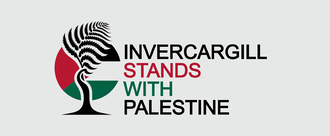(1).jpg)
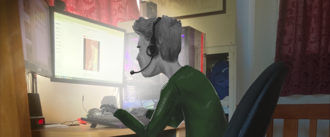
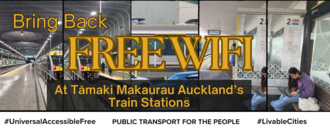
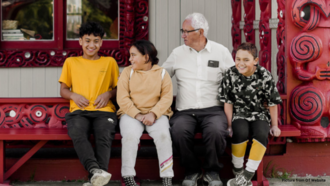
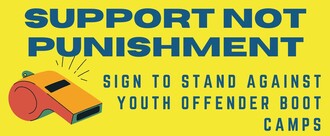
.jpg)
